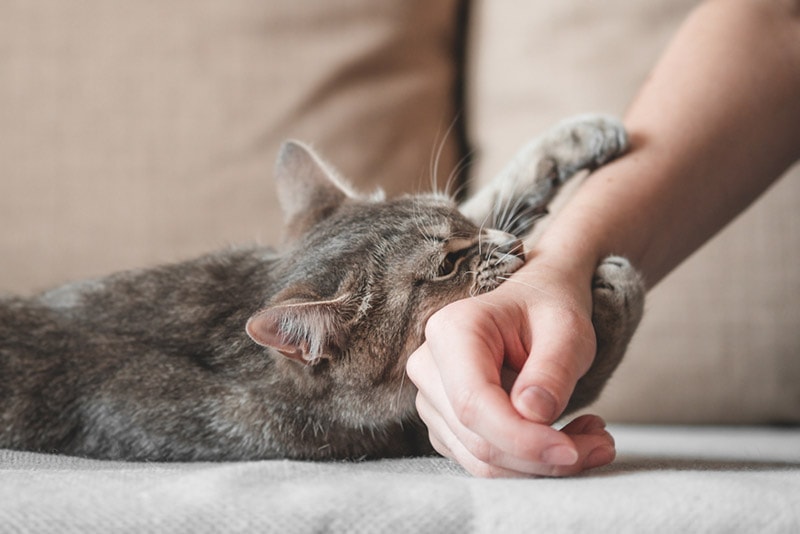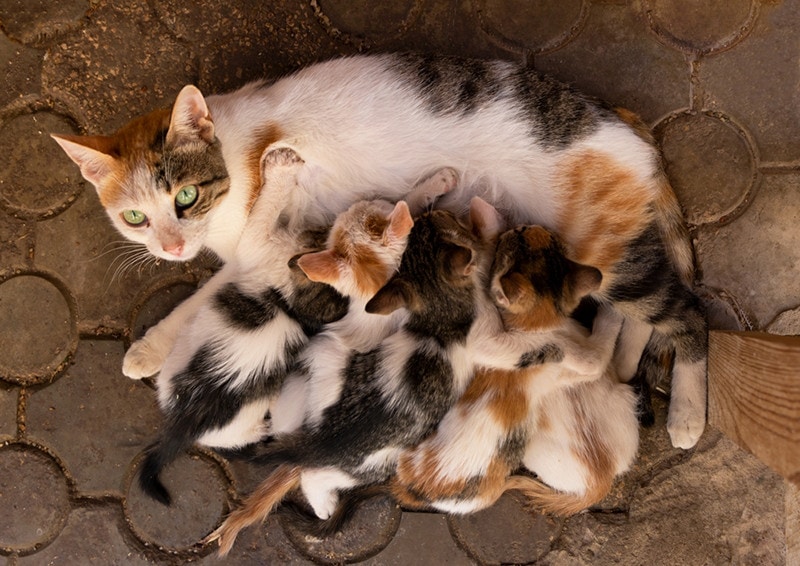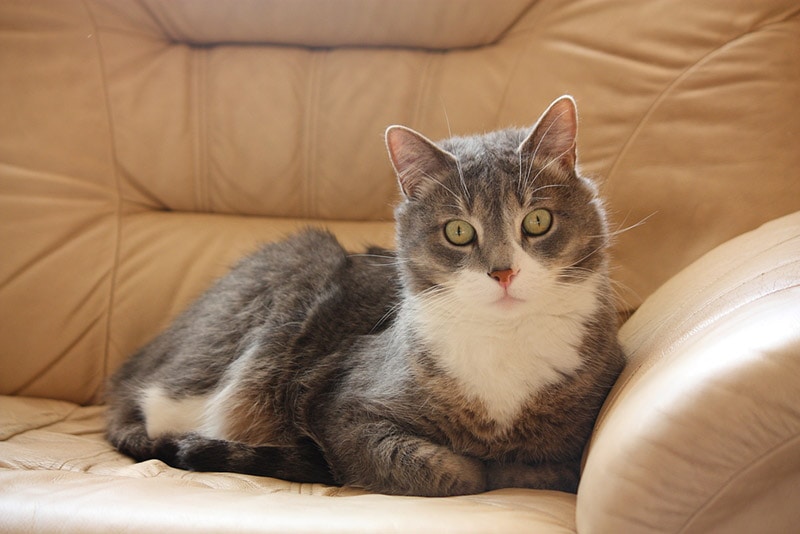Can Cats See in the Dark? Vet-Verified Feline Night Vision Facts
Updated on
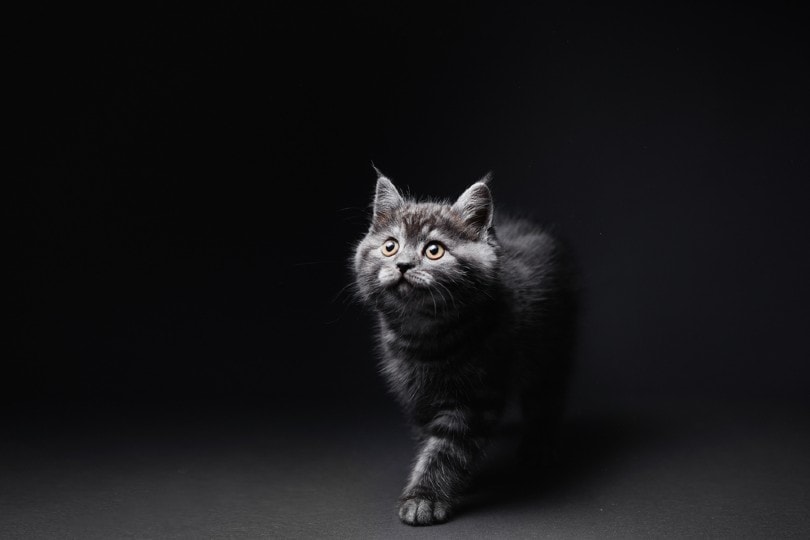
Cats can see better than humans in some situations, but not all. However, the answer to how well cats can see in the dark is a bit more complicated than most people think. Vision is multifaceted.
Cats can see extremely well in very low light conditions, but they can’t see in complete darkness. This phenomenon is related to how a cat’s eyes are designed to work. In some aspects, cat and human eyes are quite similar, but in other aspects, there are significant differences.
Cat Eyes vs. Human Eyes
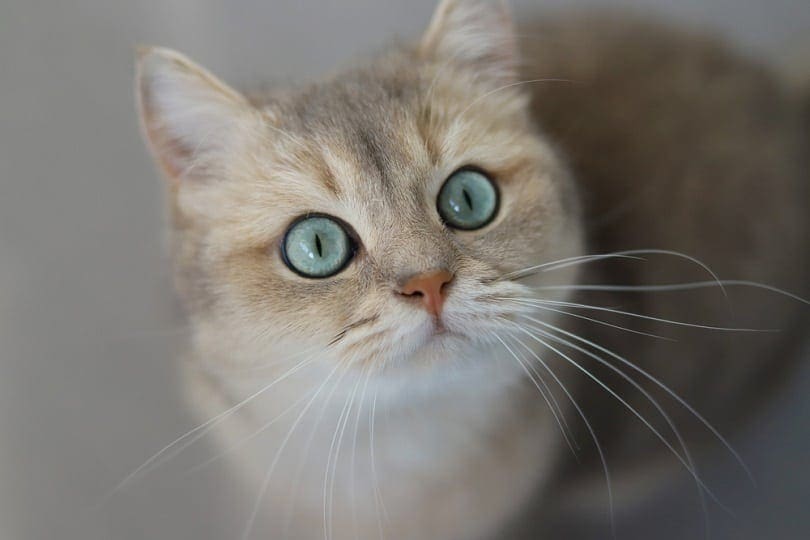
Cats have a wider field of vision than people. They can see more on the sides of their heads, in other words. However, the difference is only about 10 degrees on each side, which is not much. Still, this slightly wider field of vision helps them see prey animals that are scurrying around next to them.
In addition, cats have many rods in their eyes. These photoreceptors are the light-sensitive cells present in the retina, at the back of our eyes and cats’ eyes. They also detect movement. Cats have about six to eight times more rods than people do. Cats can see the tiniest flickers of movement, and these changes in movement stick out considerably. We can see small movements too, but they stand out particularly well to cats!
The high number of rods is one of the main reasons that cats can see better at night. But it isn’t that they see everything the same at night and during the day. Rods do need minimal amounts of light to work, so it’s in low-light conditions that a cat can see a mouse scurrying across the ground.
That said, cats have fewer cones in their eyes than humans do. These photoreceptors are responsible for color vision. Humans have about 10 times more cones than cats, which is why we see much richer colors. Cats’ color vision is limited. In fact, we don’t know exactly what colors a cat can see and which ones they can’t. It isn’t easy to run studies on accurate color perception—and we can’t exactly ask!
Experts believe that felines can see yellows and blues best, along with shades of green. Their world may not contain as many reds and purples as ours. This is not a problem for cats, though, as color isn’t essential for their needs. They are carnivores, so they eat things that move. Movement is much more important than color. After all, a brown mouse probably doesn’t look that different against a brown forest floor.
How Do Cats See at Night?
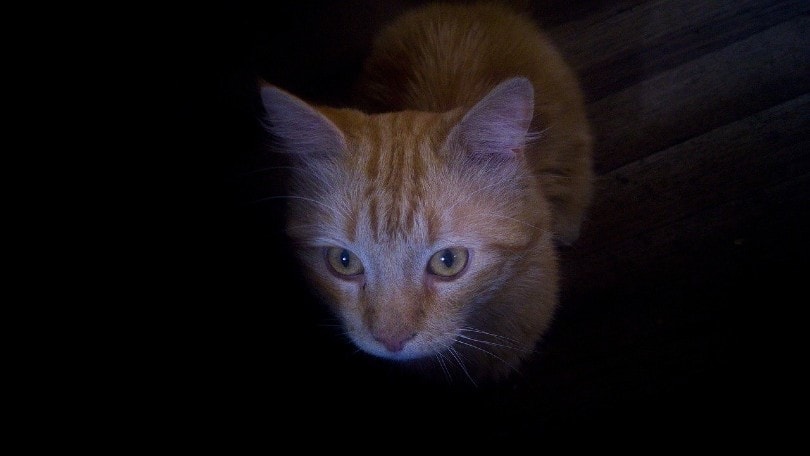
Cats may not have night vision, as many people have been led to believe. Instead, they can see extremely well in low-light conditions and make the most of the available light. They can pick up on small movements at night that we can’t see or recognize. Since they have more rods in their eyes, they are much more sensitive to light.
However, their color vision at night won’t be any better than ours. Their cones still need high levels of light to function, just like ours do. Our respective range of color vision is probably similar at night, when everything looks like a shade of gray.
Cats see much better in low-light conditions than we do, but their sense of color is equally affected by the lack of light.
Can Cats See in Total Darkness?
No, cats cannot see in total darkness. Just like people, cats need light to see, though they only require approximately ⅙ the amount of light that humans need. Their rods still need light to be stimulated, so in total darkness, they won’t be able to see much!
Cats have better adapted to lower levels of light than people. They’re much better at noticing shapes and movements when light levels are low. If you remove all light, they won’t be able to see, though, and neither would any other species with the same sort of vision. There is a reason bats use echolocation at night; eyes simply don’t work without light.
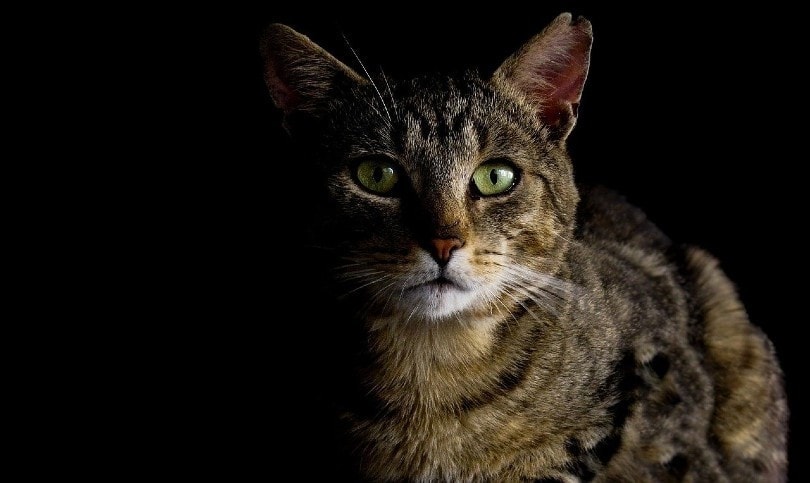
How Do Cats See at Night?
- First, they contain more rods. These photoreceptors don’t require much light to work and can detect light. With more rods, cats make the most of any light that is available and much better than humans can.
- Second, cats’ eyes are designed to let in more light with their big corneas and large and round dilated pupils. The extra rods wouldn’t be that helpful if light couldn’t reach them, after all.
- Third, cats have an extra reflective layer on the back of their eye called the tapetum lucidum. Due to this structure, incoming light that is not used by the photoreceptors has a second chance of being absorbed, since the tapetum works like a mirror, reflecting light back to the retina. If you’ve ever wondered why cats’ eyes glow in the dark, it’s due to the existence of the tapetum. Light is much more likely to hit a rod when it enters a human eye. This isn’t much of an issue for us, though, as we have a lower number of rods to begin with.
Is Cat Night Vision Like Looking Through Night Vision Goggles?
Felines can see well in low-light conditions because their eyes are built for this purpose. They pick up more light from their surroundings, which enables them to see shapes and movements. Cats need about ⅙ of the light that we need to see. So, if you take a dark moonless night and increase the light level by six, that’s about what our cats can see. (Remember, though, they can’t see color quite as well as us, so the color spectrum will likely be a bit different!)
Night vision goggles use a completely different method to see. They capture infrared light, which enables you to see what’s going on at night. This light is given off by hot objects, like people and animals. Therefore, you can only see hot things with night vision goggles, but those hot things stand out.
The image you see through night vision goggles is dependent on the image made by the heat given off by things within the frame. If nothing is giving off heat, you can’t see much of anything.
Cats cannot see infrared light at all. Therefore, their vision doesn’t look like anything we would see through night vision goggles. However, some animals can see infrared like pit vipers. Some parasites, like bed bugs, also see in infrared. It is a huge benefit when they’re trying to track down their prey.
Conclusion
Cats do have night vision—in a sense. However, it is nothing like night vision goggles. Instead, they can detect movement and various details, even with minimal to absent color vision.
While it is hard to estimate, cats are likely better at detecting movement and shapes at night. They don’t have the same range of color that we do, so they don’t pick up colors at night. It isn’t like night never happened; their eyes are just much better at picking up small movements than ours are.
Cats also can’t see infrared light, so it isn’t like they’re looking through a pair of infrared goggles. Some animals can see this sort of light, but felines don’t fall into this category.
In the end, we can’t be exactly sure how our cats see. After all, we can’t exactly ask them. (Trying to compare vision would be extremely difficult even if we could!) However, we can look at clues in their eye anatomy to help us figure it out.
Looking for more in-depth cat information? Take a look at:
- Can Cats Cry? Everything You Need to Know!
- Can Cats Eat Chicken? What You Need to Know!
- Why Do Cats Have Tails? Everything You Need to Know!
Featured Image Credit: kudla, Shutterstock


